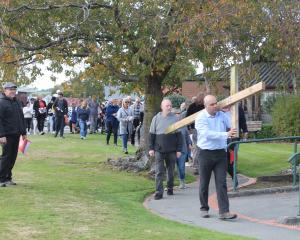
Environment Southland general manager regulatory services Hayley Fitchett said getting through a successful winter would require planning and an understanding of the rules.
"Southland farmers already know the weather in winter is wet and cold.
"Even though predictions are for normal rainfall and average temperatures, farmers should be prepared in case that changes," she said.
She said ES had seen a real effort over the years to improve practices and comply with rules as they come in and that she understood it had been difficult at times with changes in both regional and national regulations.
"Our staff are here to help if you’re in need of support or advice."
The winter grazing season runs from May 1 to September 30.
There are rules in the Southland water and land plan for cultivation, intensive winter grazing and pasture-based winter grazing that farmers need to consider.
Recent early assessments by Environment Southland’s land sustainability staff highlighted some issues where farmers need to pay extra attention as stock start to graze crop.
These include setbacks of crop from waterways being too small to meet the rules, and the cropping of critical source areas.
If farmers have cultivated on slopes above 20° in critical source areas or within setbacks to waterways, they will need to fence off those areas and not allow grazing until the winter grazing period has ended.
Throughout winter, staff will be focusing on these areas, as well as pasture-based winter grazing, which also has rules in the regional plan.
"The team will be carrying out monthly aerial monitoring flights as well as roadside assessments," she said.
"We’ll also be following up on any reports through our pollution response phone number."
"If we are alerted to properties with potential environmental risks staff will investigate.
"The options following these investigations will depend on a few factors, including the level of environmental impact," she said. —APL












